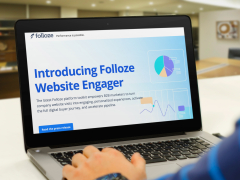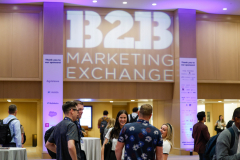Bye-Bye, Boomers: Millennials & Gen Z Now Constitute 64% Of Business Buyers
- Written by Kelly Lindenau
- Published in Blog
Despite Millennials and Gen Zers being the butt of numerous jokes, Forrester’s “Buyers’ Journey Survey, 2022” found that younger demographics are challenging the traditional notions of the buyer’s journey. The survey uncovered that 64% of business purchase influencers were born after 1981, with Millennials serving as the largest cohort at 57%.
With such high representation, Amy Hayes, Forrester’s VP, Research Director, teamed up with other Forrester analysts to write a data overview report outlining the implications of the changing buyer demographics, titled “Younger Buyers Have Changed The Business Buying Landscape.”
“Generations tend to have an influence or an impact in business buying behavior,” said Hayes. “It’s important for businesses to understand where the tide is turning and where those shifts are heading so they can start thinking and contemplating that in their plans and compare that to what they already know about their buyers.”
The report, which defines anyone born in or after 1981 as “younger buyers” and anyone born between 1946 and 1980 as “older buyers,” found thatover the next two years, more than one third of younger buyers will purchase through self-guided digital channels. Specifically, the younger generation prefers transacting through internal app stores, external marketplaces or app stores and vendor websites.
Simultaneously, younger generations are more likely to conduct independent, third-party verified research throughout their buying journeys, while older buyers relied more heavily on first-party insights. Specifically, younger buyers indicated that the most impactful sources for generating information are:
- Technology information websites (47%);
- Forums (42%);
- Industry websites (38%).
By contrast, older buyers pointed to:
- In-person vendor sales;
- Peers; and
- Vendor websites.
“Younger buyers tend to value information from third-party sources outside of the vendor’s control, such as a journalist, analyst or media outlet,” said Hayes. “There’s a significant need for providers to understand what those sources of influence are for their younger buyers to design a program that reaches those influencers.”
However, it appears younger buyers are likely to be more critical throughout their buying journeys, as 90% cited dissatisfaction with the vendor in at least one area compared to 71% of older buyers. According to Hayes, the two primary areas of sources for younger buyers’ dissatisfaction are around the relationship with the sales rep and their competence during the buying process. To combat that disconnect, Hayes stressed the importance of ensuring buyer-facing roles were well-versed in the buyer’s needs, pain points and how they’re buying.
“There’s nothing that compares to having direct conversations with buyer personas that you’re most interested in reaching,” said Hayes. “My No. 1 recommendation for any organization — even if they’re not dealing with younger buyers — is to also make sure they’re prioritizing conversations and interviews with both their perspective and current buyers on a regular basis.”
Related items
-
 Programmatic Advertising Tricks For B2B Marketers
Programmatic Advertising Tricks For B2B Marketers
-
 Totango & Catalyst Unify Product Offerings Through Merger
Totango & Catalyst Unify Product Offerings Through Merger
-
 Folloze Launches Website Engager To Help Personalize Web Pages
Folloze Launches Website Engager To Help Personalize Web Pages
-
 #B2BMX Day 3 Recap: Unraveling The Marketer’s Paradox To Enter The B2B Content Renaissance
#B2BMX Day 3 Recap: Unraveling The Marketer’s Paradox To Enter The B2B Content Renaissance
-
 Photoroom Secures $43M In Series B Funding; Releases Suite Of AI Tools
Photoroom Secures $43M In Series B Funding; Releases Suite Of AI Tools




